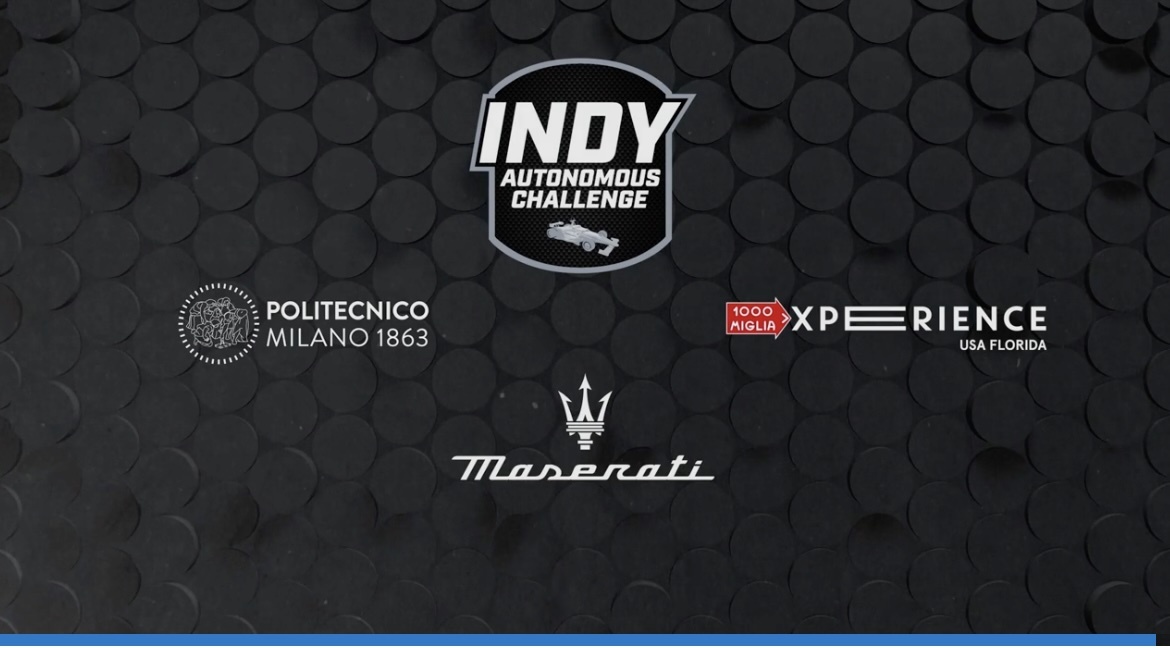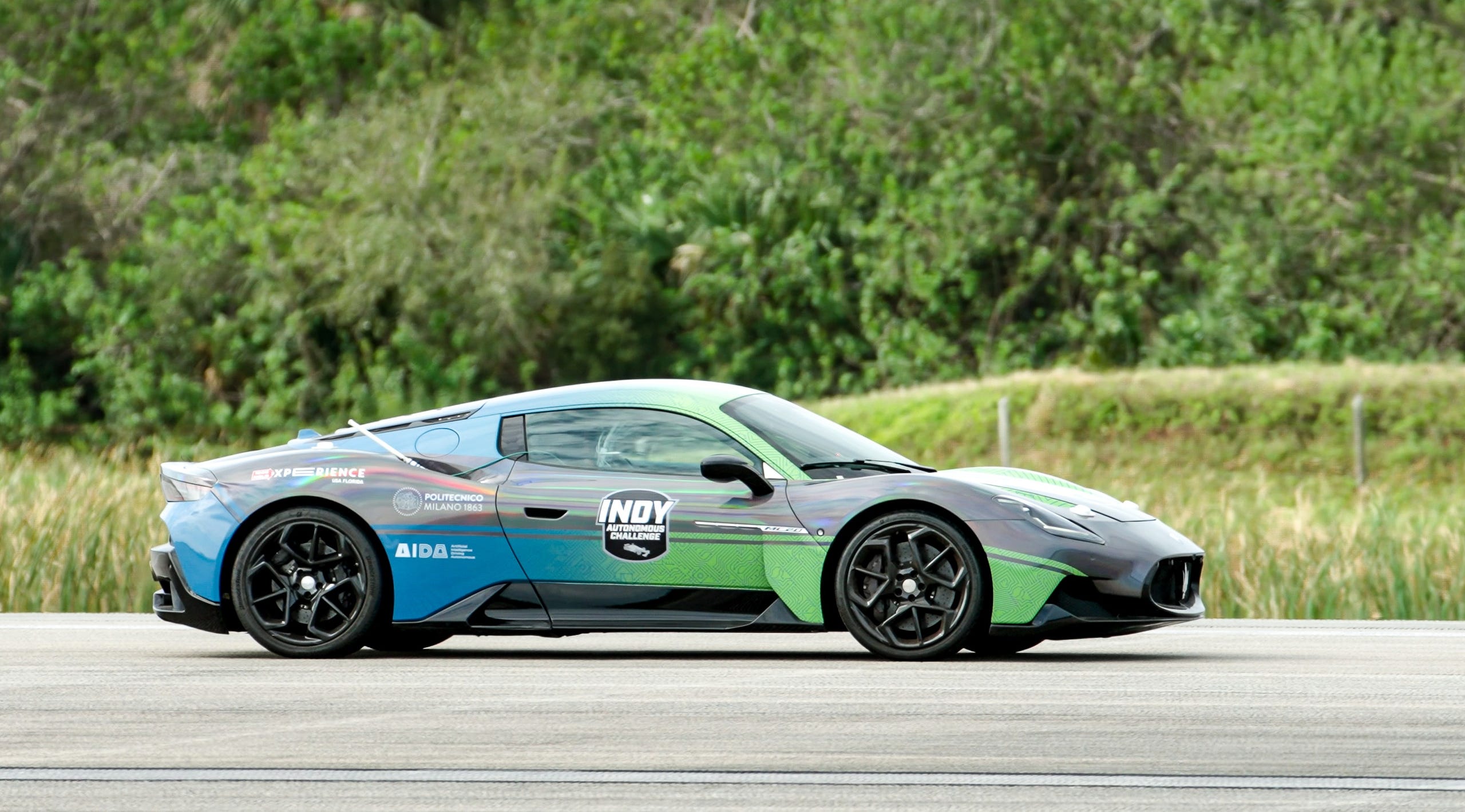16.04.2025


Revving up to extreme speed, the Maserati MC20 screamed just shy of the 200-mph barrier while zooming down the center of NASA's old space shuttle landing strip — with nobody in the driver's seat.
The sensor-equipped supercar shattered the autonomous-driving speed record by reaching an eye-watering 197.7 mph at NASA's Launch and Landing Facility — one of the world's longest runways — at Kennedy Space Center. AI software piloted the vehicle, with "a driving robot" powering delicate movements of the steering wheel.
Ranking as America's fourth-longest runway, the LLF measures more than 2.8 miles long (15,000 feet) and spans as wide as an NFL football field is long. This colossal concrete strip supported 218 ground tests last year for companies ranging from space-industry stalwarts to Tesla, Volvo and the Florida Highway Patrol, Space Florida reported.

Speed records aside, Mitchell said autonomous-car technology tested at the LLF may lead to passenger-car safety systems designed for "high-speed edge-case management on highways" — think about when a car abruptly cuts you off on the interstate, or you unexpectedly approach a traffic jam.
"On highways, managing those — the braking distance, the latency, the limited amount of time you have to make decisions, the vehicle controls — all become much, much more consequential than what you experience in, say, urban-suburban driving," Mitchell said.
The U.S. autonomous vehicle market is projected to skyrocket from $79 billion in 2025 to $1.8 trillion by 2034, Precedence Research reports. That study defines self-driving cars as vehicles that can operate without human assistance.
It's not only autonomous vehicles that historically break records at the LLF. Various limited-edition "hypercars" with human drivers have set or approached production-car world speed records over the years at the KSC runway. That's where a Hennessey Venom GT roared to a top speed of 270.5 mph in February 2014. Then in May 2022, an SSC Tuatara reached a top speed of 295.0 mph.
An undisclosed client is performing high-speed tests at the LLF the week of April 14, with a second undisclosed client scheduled to do likewise the following week, Space Florida spokesperson Alayna Curry said.
Jimmy Moffitt, Space Florida vice president of spaceport operations, detailed the LLF during a March National Space Club Florida Committee luncheon speech at Radisson Resort at the Port in Cape Canaveral. The site includes 4,432 acres of surrounding land, including an air traffic control tower, flight operations buildings and a NASA rescue-firefighting facility.
“My uncontested claim to fame for the runway is it’s the flattest runway in the world. We just recently had it surveyed — and it’s less than 1% difference in grade throughout the entire length,” Moffitt told the audience.
NASA's first space shuttle landing occurred there when Challenger touched down in February 1984 on the STS-41B mission. All told, 78 of the 135 shuttle missions landed on the runway, including Atlantis' final descent on July 21, 2011, that ended the program.
“That was the end of an era. A 30-year program ended that day — and quite a few bad things happened after that. A lot of people lost their jobs. And I don’t think any of us in this room wants to see that again. And that’s one of our goals here, is to diversify and really grow the industry as a whole," Moffitt said.
KSC transferred LLF management to Space Florida in 2015 to accommodate growing demand from private companies. Today, users and tenants include NASA, Blue Origin, SpaceX, Embraer, Airbus U.S. Space & Defense, Sierra Space and Starfighters Space, which hopes to soon launch small satellites from the wings of supersonic Lockheed F-104 jet interceptors.
Three years ago, Space Florida installed a two-mile utility corridor to provide electricity, water and communications service to spur development of more than 400 acres off the east side of the runway. That's where Amazon is now operating its $140 million Project Kuiper satellite processing complex, including a plant standing about 120 feet tall and a 42,000-square-foot flight hardware building under construction.
The initial payload of 27 Project Kuiper production satellites was scheduled to launch into orbit April 9 atop a United Launch Alliance Atlas V rocket from Cape Canaveral Space Force Station, but cumulus clouds forced a scrub. ULA has yet to reschedule that mission. Plans call for creation of a constellation of more than 3,200 broadband satellites, and Amazon has more than 80 future launches under contract.
For purposes of scope, the runway spans 4½ million square feet of concrete, measuring almost two feet thick along the centerline. Last year, an array of spacecraft were flown into KSC here prior to launch, including the Bandwagon-1, Galileo, Turksat, Maxar-2, Europa Clipper, Hera and GSAT-20 missions.
The MC20 supercar that set the speed record March 3 boasted extra GPS sensors and cameras, along with a "driving robot" that controlled the steering wheel, said Davide Danesin, Maserati chief engineer. The autonomous system also controlled the brakes and throttle.
Danesin called the speed record "a very effective way to communicate technology." He said the exotic Maserati's autonomous systems may someday help motorists recover from driving mistakes.
"All the knowledge we are developing about controlling the car at the limits is basically, in the future, going to be an improvement in the product," he said.
Based in Indianapolis, Indiana, the nonprofit IAC builds the world’s fastest autonomous race cars. The MC20's AI driver software was developed by a team of students and faculty from Politecnico di Milano, Italy's largest school of architecture, design and engineering, and Michigan State University.
The IAC had set the previous autonomous-car speed record of 192.8 mph in April 2022 at the LLF with an IndyCar-based Dallara AV-21 racer. More high-speed testing may happen at the Florida facility this fall, Mitchell said. Crews measure speeds during consecutive runs across a designated stretch of runway in opposite directions.
There are no crowds of racing spectators at the controlled-access LLF, which Mitchell said is so remote that poor cell service can hinder vehicles' real-time kinematic positioning sensors. In one recent test there, he said, an autonomous race car using LIDAR, GPS and other technologies reached about 150 mph while driving in darkness with no headlights.
“We go to the landing facility when we’re trying to set baseline. So now, we know kind of what the limit of that Autonomous Challenge MC20 is from a speed standpoint. So the other tests that we’ll likely run are at racetracks or hill climbs, things of that nature. We’re looking at our schedule for 2026 to do those kinds of exhibitions," Mitchell said.
Quelle: Florida Today
